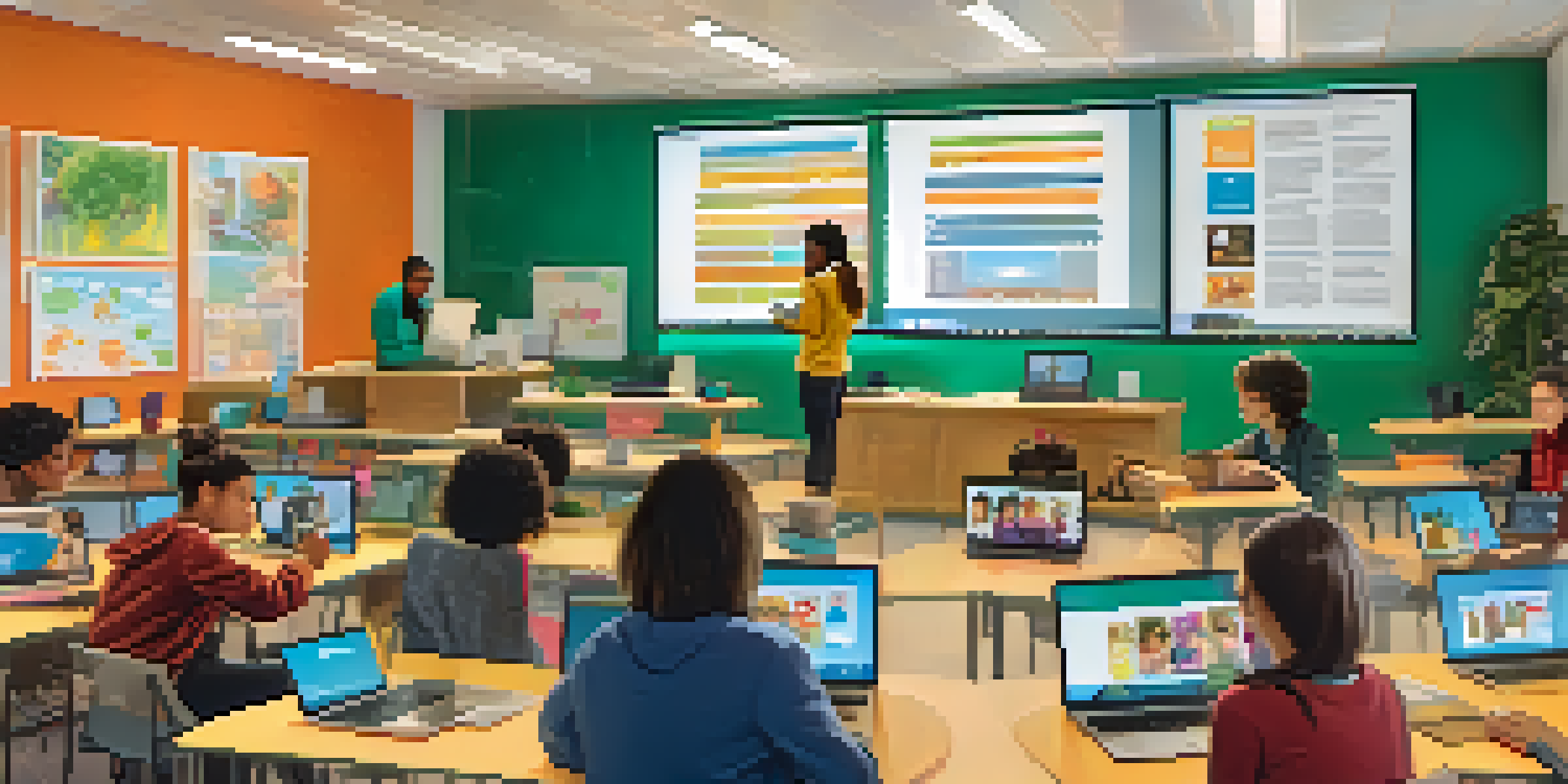Designing Engaging Online Learning Experiences for Students

Understanding the Needs of Online Learners
To create engaging online learning experiences, it's essential to first understand the unique needs of your students. Each learner comes with different backgrounds, motivations, and learning styles. By considering these factors, educators can tailor their content and delivery methods to resonate better with their audience.
Education is the most powerful weapon which you can use to change the world.
For example, some students may thrive in a collaborative environment, while others might prefer independent study. This diversity necessitates an adaptable approach, ensuring that all learners feel included and supported. By conducting surveys or informal check-ins, educators can gain insights into their students' preferences.
Ultimately, understanding your audience lays the foundation for designing effective online courses. When learners feel understood and valued, they are more likely to engage with the material and participate actively.
Leveraging Technology for Interactive Learning
Incorporating technology can significantly enhance the interactivity of online courses. Tools such as quizzes, polls, and interactive videos can transform passive learning into an engaging experience. For instance, using platforms like Kahoot! can turn a simple quiz into a fun competition, motivating students to participate.

Moreover, technology allows for real-time feedback, which is crucial in online learning environments. When students receive immediate responses to their efforts, it boosts their confidence and encourages further exploration of the subject. This instant feedback loop helps educators identify areas where students may struggle and adjust their teaching accordingly.
Understand Learner Needs
Recognizing the diverse backgrounds and learning preferences of students allows educators to tailor their online courses for better engagement.
By creatively integrating technology, educators can foster a dynamic online learning atmosphere. This not only captivates students' attention but also promotes deeper understanding and retention of the material.
Creating a Sense of Community Among Students
One challenge of online learning is the feeling of isolation that students may encounter. To combat this, it's vital to create a sense of community within your virtual classroom. Encouraging collaboration through group projects or discussion forums can help students connect and share ideas.
The beautiful thing about learning is that no one can take it away from you.
A simple icebreaker activity at the beginning of a course can set the tone for a supportive environment. For example, having students introduce themselves and share their learning goals fosters camaraderie and builds trust. When students feel that they belong to a community, they are more likely to engage and participate actively.
Establishing a strong community not only enhances the learning experience but also promotes peer support. This collaborative spirit can lead to lasting friendships and professional networks, enriching students' educational journeys.
Implementing Varied Content Formats for Engagement
Variety is the spice of life, and this holds true in online education as well. By diversifying content formats—such as videos, podcasts, infographics, and articles—educators can cater to different learning preferences. This approach keeps the material fresh and interesting, reducing the risk of disengagement.
For example, a video lecture can capture visual learners, while a podcast may resonate with auditory learners. Incorporating real-world examples and case studies can also make the content relatable and applicable. This not only aids in understanding but also enhances retention of information.
Create Community Online
Fostering a sense of community through collaboration and interaction helps combat feelings of isolation in online learning environments.
Incorporating a mix of formats encourages students to engage with the material in multiple ways. This multifaceted approach can lead to a more enriching and enjoyable learning experience.
Encouraging Active Participation and Feedback
Active participation is key to a successful online learning experience. Educators should create opportunities for students to ask questions, share insights, and collaborate with their peers. This can be achieved through discussion boards, breakout rooms, or live Q&A sessions.
Moreover, soliciting feedback from students about the course content and structure is crucial. Regular check-ins and anonymous surveys can provide valuable insights into what’s working and what needs improvement. This feedback loop not only empowers students but also helps educators refine their approaches.
By fostering a culture of active participation and feedback, educators create a dynamic learning environment. When students feel their voices are heard, they are more likely to engage deeply with the material and contribute positively to the course.
Setting Clear Goals and Expectations for Students
Clarity is essential in online learning, and setting clear goals and expectations can significantly enhance student engagement. At the beginning of a course, educators should outline learning objectives and assessment criteria. This transparency helps students understand what is expected of them and how they can succeed.
For instance, providing a weekly roadmap can guide students through the course, highlighting key topics and deadlines. When students have a clear understanding of their journey, they are more likely to stay organized and motivated. This structured approach can alleviate feelings of overwhelm that often accompany online learning.
Use Technology for Engagement
Incorporating interactive technology and varied content formats enhances student participation and makes learning more enjoyable.
By establishing clear goals and expectations, educators empower students to take ownership of their learning experience. This sense of agency often leads to increased motivation and commitment to the course.
Utilizing Gamification to Boost Engagement
Gamification is a powerful tool for fostering engagement in online learning environments. By incorporating game-like elements, such as points, badges, and leaderboards, educators can motivate students to participate actively. This playful aspect can make learning feel less daunting and more enjoyable.
For example, creating a challenge where students earn points for completing assignments or participating in discussions can encourage friendly competition. When students see their progress displayed on a leaderboard, it can inspire them to strive for improvement. This gamified approach not only makes learning fun but also reinforces key concepts.

Utilizing gamification techniques can transform the online learning experience into an exciting journey. By tapping into students' intrinsic motivations, educators can foster a more engaging and impactful learning environment.
Evaluating and Iterating on Course Design
The journey of designing engaging online learning experiences doesn’t stop once the course is launched. Continuous evaluation and iteration are essential for maintaining relevance and effectiveness. Educators should regularly assess the course's performance and gather feedback from students to identify areas for improvement.
For instance, analyzing completion rates and student engagement metrics can provide insights into what aspects of the course are resonating well. Additionally, conducting post-course surveys can help gather qualitative data on students' experiences. This information is invaluable for refining content and delivery methods.
By committing to an iterative design process, educators can ensure that their online courses remain engaging and effective over time. This proactive approach not only enhances the learning experience but also demonstrates a commitment to student success.